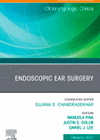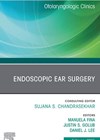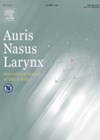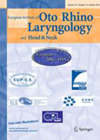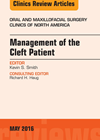
Journal Reviews
Is endoscopic stapes surgery safe and are outcomes comparable to microscopic stapes surgery
Endoscopic techniques for visualisation of the middle ear were described in 1967 by Mer and colleagues, and the use of transcanal endoscopic ear surgery (TEES) has since expanded to a wider range of otologic applications including tympanoplasty and excision of...
Endoscopic stapes surgery - pearls and pitfalls
Endoscopic ear surgery has gained popularity in recent years with wide panoramic visualisation of the operative field one of its key strengths. This article summarises the approach, set-up and outcomes of patients undergoing endoscopic stapes surgery. A key step during...
Facial nerve anatomy in the temporal bone
Knowledge of the facial nerve anatomy during otological surgery is crucial in avoiding an iatrogenic injury to the facial nerve. In this study, the authors investigated the anatomical relationship between the tympanic portion of the facial canal (FC) and the...
Titanium bobbins are prone to water penetration
There is limited evidence that swimming with grommets increases ear infections and most clinicians advise swimming with ventilation tubes is acceptable. Concerns may persist especially among parents. This paper evaluates the amount of different liquids (soapy water, sea water, chlorinated...
Management of the ear in cleft lip and palate
The management of patients with cleft lip and palate includes a focus on effective speech and language function. Poor eustachian tube function and middle ear dysfunction mean over 90% of children suffer from otitis media with effusion. This article provides...

